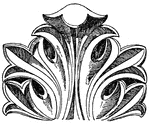Clipart tagged: ‘constantinople’
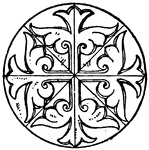
Byzantine Circular Panel
The Byzantine circular panel is a 6th century design found in Hagia Sophia of the former imperial Ottoman…

Constantinople
An illustration of the fortification around Constantinople and soldiers firing cannons.
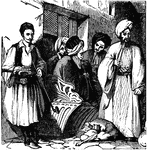
Life in Constantinople
In the streets of Constantinople one might find lemonade sands, sweetmeats, coffee, and pipes and at…
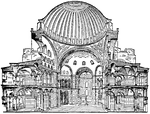
Hagia Sophia
Cross section of Hagia Sophia in Istanbul (historically Constantinople). The Greek name Hagia Sophia…

Dome System of Hagia Sophia
"Dome-System of the Church of Sta. Sophia at Constantinople. The Byzantine style of this first period…

Exterior of Hagia Sophia
"Exterior of the Church of Sta. Sophia at Constantinople. Although the impression conveyed by this church…
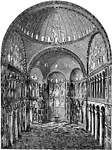
Interior of Hagia Sophia
"Interior of the Church of Sta. Sophia at Constantinople. Besides the Narthex, there was a second vestibule:…

Section of Hagia Sophia
"Section of the Church of Sta. Sophia at Constantinople. The Byzantine style of this first period reached…

Byzantine Interlacement Band
The Byzantine interlacement band consists of wavy arcs and curves that have an angular bend. This design…
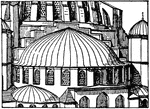
Suleimanié Mosque
"Semi-dome, exterior. Apse of Suleimanié Mosque, Constantinople (A.D. 1550)." -Whitney, 1911

Suleimanié Mosque
"Semi-dome, interior. Apse of Suleimanié Mosque, Constantinople (A.D. 1550)." -Whitney, 1911
